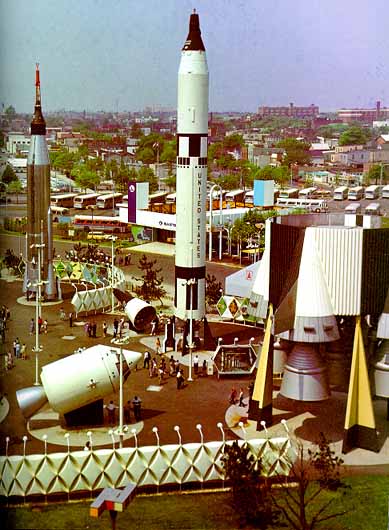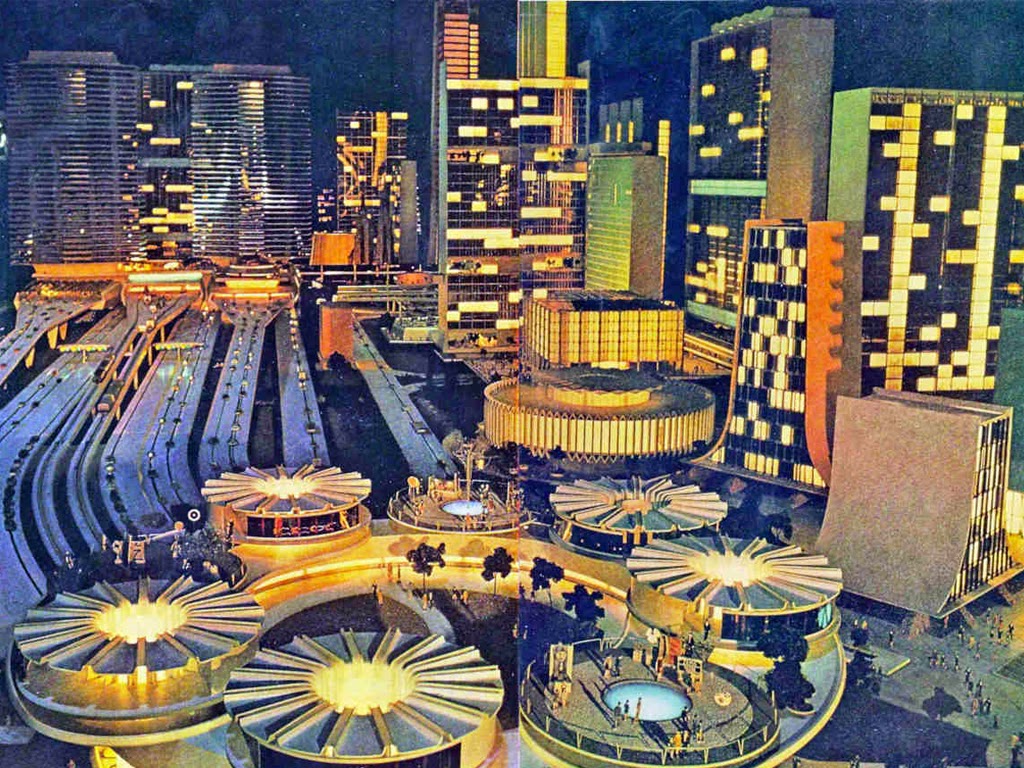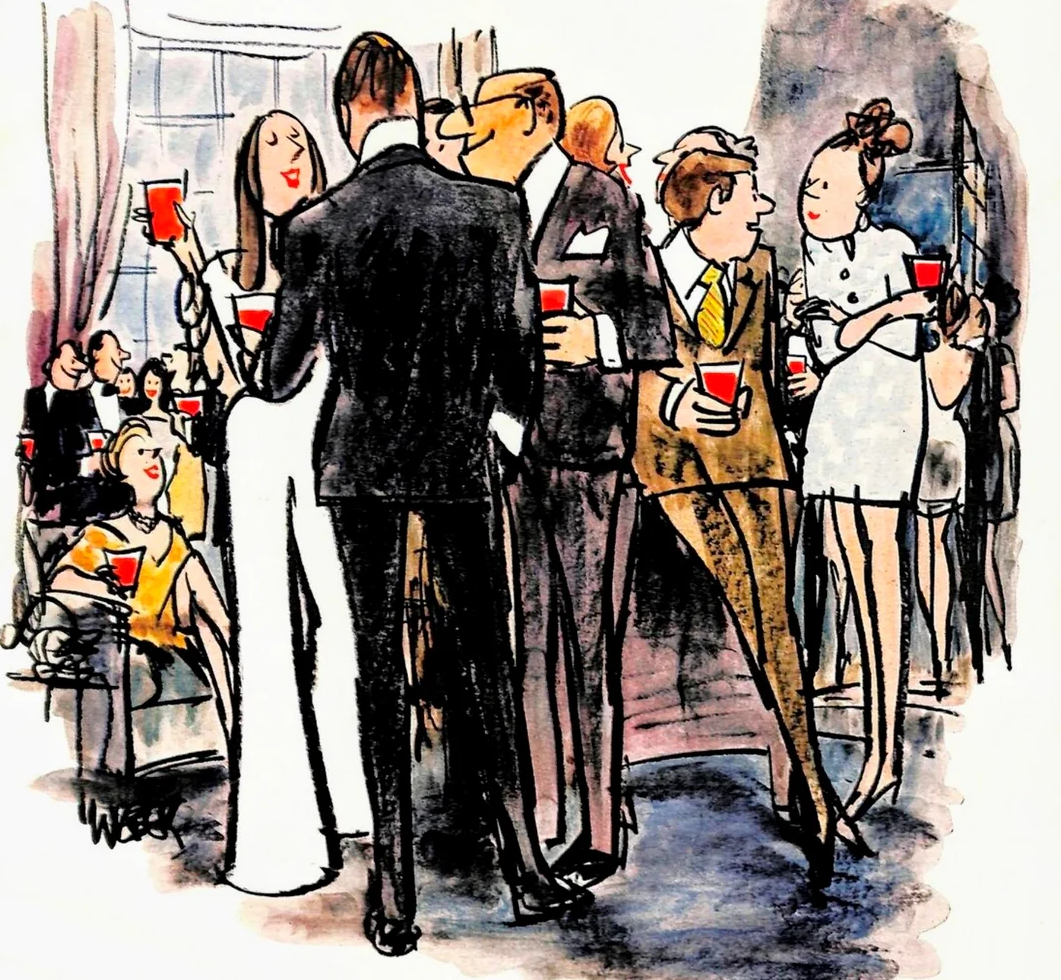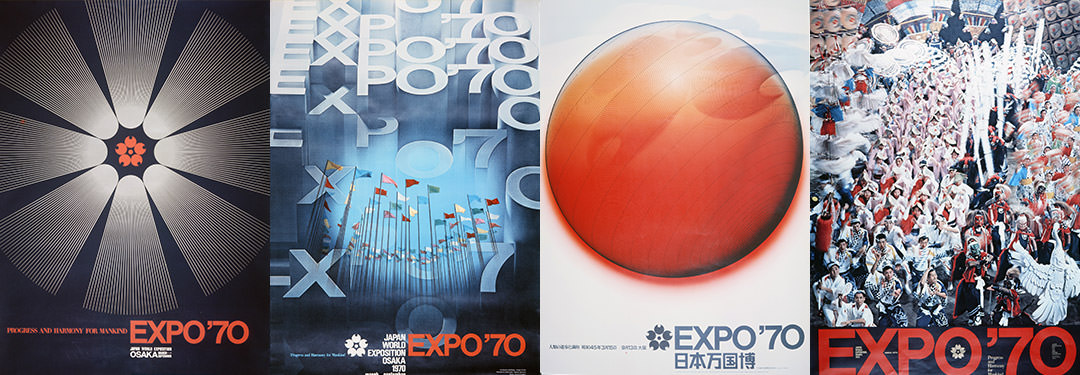
by Victoria Silverwolf
Hail, Britannia
To the surprise of absolutely nobody, the Beatles again have the most popular song on the U.S. charts. This time is it's a cheerful little melody called Can't Buy Me Love.

You'd be grinning too, if you were that popular.
I suppose there will be no end of imitations. My sources in the UK tell me a new group just released its first album. You can't tell from the minimalist cover, but they're called the Rolling Stones.

I thought they were called Decca.
The album isn't yet available on this side of the Atlantic, so I can't tell you what it sounds like. Judging by the haircuts, I assume it will be a lot like the Fab Four. Fantastic Five, maybe, if Marvel Comics doesn't object.
The British don't just export music, of course. They also supply us with sex and violence, in the person of James Bond, Agent 007. From Russia With Love, the sequel to the hit movie Dr. No opened on Yankee screens this month.

One should always be properly dressed while wielding a pistol.
All's Fair
Other nations besides the United Kingdom have a chance to impress Americans for the next couple of years. The New York World's Fair opened to the public today, with exhibits from dozens of foreign countries, as well as several states and business corporations.

That's the Unisphere, symbol of the Fair. I call it a globe.
Those of us with long memories will recall the 1939 New York World's Fair. It's hard to believe that a quarter of a century has gone by.

The pointy one is the Trylon and the round one is the Perisphere. They look more modern than the new one, don't they?
It would tedious to try to describe all the stuff going on at this extravaganza, but let me point out a few highlights. Science fiction fans will want to visit the Space Park.

NASA shows off their fancy equipment.
The state of Wisconsin brags about its most famous products.

Does that mean the World's Largest Cheese gets in free?
Noted puppeteers Sid and Marty Krofft will present a stage spectacular called Les Poupées de Paris (The Dolls of Paris.) So what? Who cares about a kiddie puppet show? Well, this musical revue is for adults only. Seriously. You have to be at least twenty-one years old to get in. It's just too sexy and too scary for the little ones.

Here's one of the scary parts. I can't show you the sexy parts unless you have proof of age.
For those of us who can't make it to the Big Apple this year or next, at least we can explore strange new worlds in the pages of our favorite magazines. Let's head for the main gate and see what the latest issue of Fantastic has to offer.
Tickets, Please

art by Ed Emshwiller
Adept's Gambit, by Fritz Leiber
Our first exhibit is an oldie but a goodie — this issue's Fantasy Classic deserves the name, and I won't complain about filling more than one-third of the issue with a reprint. It appeared in the pages of the 1947 Arkham House collection Night's Black Agents.

Cover art by Ronald Clyne
Just over three thousand copies of the book exist, so most fantasy fans won't be familiar with this novella featuring our old friends Fafhrd and the Gray Mouser.
A brief introductory note explains that the two adventurers are no longer in their usual fantasy realm of Nehwon. Having made their way through passageways that connect all possible worlds, they are now on Earth. To be specific, the Eastern Mediterranean area, in what seems to be ancient times. Don't expect historical fiction, though. This is a place full of enchantment and supernatural menace.
As they often do, the pair relax after their struggles in the arms of beautiful young women. Things quickly go wrong when Fafhrd's paramour turns into a sow. He suspects his companion of playing tricks on him, but this theory explodes when the Mouser's girlfriend changes into a giant snail. Both ladies regain their normal shapes after a while, but whenever either of the heroes embraces a woman, the same thing happens.
This is, of course, an intolerable situation. Reluctantly, they seek out their eldritch mentor Ningauble of the Seven Eyes. That bizarre being sends them on a weird quest, in the company of a mysterious woman. A long flashback sequence, narrated by the woman, relates the strange connection she has with her brother, a powerful practitioner of black magic. It all leads up to a final confrontation with the evil sorcerer.
Nobody writes sword-and-sorcery adventures as well as Fritz Leiber. This tale has just the right balance of wit, imagination, action, suspense, fully realized characters, colorful descriptions, and more than a touch of the macabre.
Five stars.
To the Victor, by Leo P. Kelley

Cover art by George Schelling
We exit the giant Leiber pavilion and enter the first of four smaller exhibits.
The setting is a planet inhabited by primitive aliens. Humans colonized the place long ago, filling it with vast, high-tech buildings. They want more elbowroom, and the aliens don't want their environment sacrificed to the newcomers. Conflict is inevitable. This isn't the usual kind of war, however. One human being and one alien face each other in single combat.
A man well over one hundred years old, with doubts about what humanity has done to the planet, is the protagonist. He witnesses the battle, and makes a symbolic gesture of his own.
The author contrasts the rapaciousness of the technological invaders with the aliens' love of the natural world. I appreciate the point he's trying to make, but he does it in a heavy-handed way. The combat scene involves odd, almost comic Rube Goldberg devices, which spoils the story's somber mood.
Two stars.
Master of Chaos, by Michael Moorcock

Cover art by Virgil Finlay
Time for a brief excursion outside the American section of this paper World's Fair, and a quick look at what the British have on display. Will they offer us something as groundbreaking as the Beatles?
Well, not really. Like the lead novella, this is a swashbuckling fantasy adventure yarn. The hero goes to a castle that lies at the edge of the Earth. After nearly losing his way inside its labyrinthine corridors, and doing battle with a monster, he confronts the sole inhabitant (As tradition demands, a beautiful and seductive sorceress). Their meeting leads to a new challenge.
The most interesting and original concept in this story is the idea that Earth is surrounded by ever-changing Chaos. As Chaos is conquered, Earth grows. It's a striking notion, and adds a novel touch to an otherwise typical example of the genre.
Three stars.
All For Nothing, by David R. Bunch

Cover art by Lutjens
Back to the States with a writer like no one else, for good or bad. In this offbeat creation, written in the author's eccentric style, a man creates an exact duplicate of himself. His mad scheme is to challenge God to accept the double in his place, so he can escape from life and the afterlife. Adding to the horrific mood is the elaborate machines the fellow intends to use to kill himself in a particularly slow and painful way.
I don't know what to make of this grim account of someone who doesn't want to exist in Earth, Heaven, or Hell. It certainly held my attention, if only in a depressing way.
Two stars.
Gulliver's Magic Islands, by Adam Bradford, M. D.

Cover art by Blair
If Fritz Leiber's name brought me into the fairgrounds, then Adam Bradford's made me want to find the exit. Fair is fair, however, and I have to give the man a chance to redeem himself. His last two Swiftian pastiches failed to add anything to the original, and missed the satiric point. Will he stumble again?
(By the way, the magazine's editorial reveals that the author's real name is Joseph Wassersug. He's a physician who writes medical articles. As far as I can tell, he's never published any fiction other than this series. The editorial also promises – or should I say threatens? – another one to follow.)
Once again, the narrator follows in Gulliver's footsteps. He visits Balnibarbi, the island of scientists; Laputa, the flying island that floats above it; Glubbdubdrib, the island of magicians; and Luggnagg, the home of the immortal struldbrugs. Not much is done with any of these except Balnibarbi. I have to admit that the author provides some decent satire on the way in which scientists have to chase after money for their projects. For that reason, this entry is a little better than the others.
(One odd thing that struck me. The inhabitants of Glubbdubdrib are described as dark-skinned. The name of their leader is Loother Krring. All other words made up by the author seem to be meaningless, but this one appears to be an allusion to Doctor Martin Luther King, the famous civil rights leader. What the point of this reference might be escapes me.)
Two stars
After the Fair is Over
As night falls and we leave the fairgrounds, souvenirs in our hands, we look back over an eventful day. Obviously, the Fritz Leiber pavilion was the highlight of the fair. If the other exhibits were disappointing, well, that's life. At least we can send a postcard telling the folks back home all about it.

[Come join us at Portal 55, Galactic Journey's real-time lounge! Talk about your favorite SFF, chat with the Traveler and co., relax, sit a spell…]


 How the Futurama II diorama at the 1964 New York World's Fair envisaged a city in the year 2014
How the Futurama II diorama at the 1964 New York World's Fair envisaged a city in the year 2014
![[August 24, 1970] Have I Seen the Future? (Expo 70, Osaka, Japan)](https://galacticjourney.org/wp-content/uploads/2025/08/EXPO70-logo-2-672x372.png)


![[April 22, 1964] World Affairs (May 1964 <i>Fantastic</i>)](https://galacticjourney.org/wp-content/uploads/2019/04/640422cover-601x372.jpg)
















